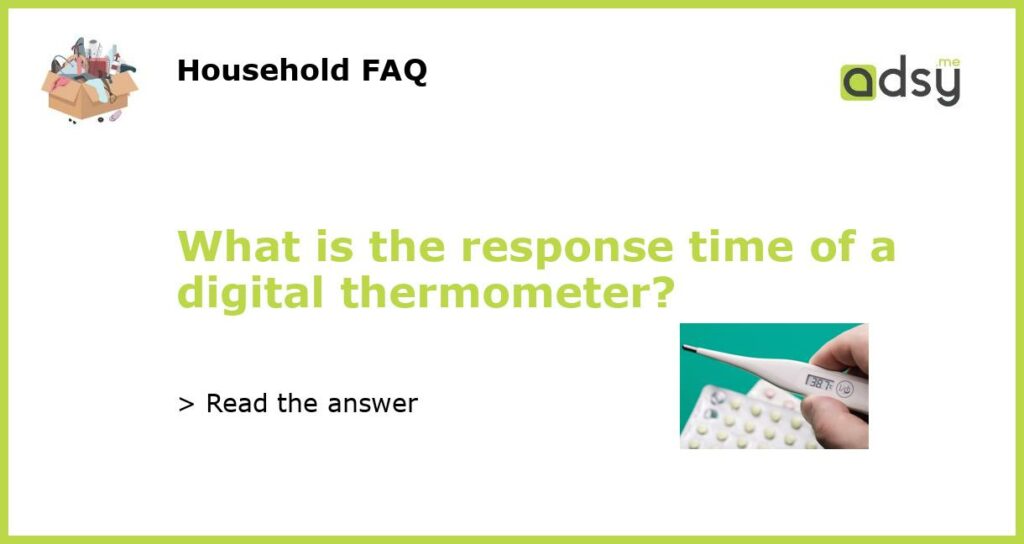The Basics of a Digital Thermometer Response Time
Digital thermometers have revolutionized the way temperature is measured. With their quick response time, digital thermometers have become a popular choice in a range of industries.
So, what exactly is the response time of a digital thermometer?
Understanding Digital Thermometer Response Time
The response time of a digital thermometer is the amount of time it takes for the temperature sensor to accurately display the temperature after it has been inserted into the substance being measured. This can vary depending on the type of digital thermometer being used.
The response time largely depends on the accuracy of the temperature sensor, the speed of the processor, and the quality of the display. Generally, response times of digital thermometers range from 2 to 30 seconds.
Factors Affecting Digital Thermometer Response Time
Several factors may affect the response time of a digital thermometer. These include:
- Temperature range: Digital thermometers have a specific temperature range. If used outside of this range, readings may take longer to stabilize or may be inaccurate, resulting in a slower response time.
- Probe thickness: A larger probe may take longer to reach the core of the substance being measured, resulting in a slower response time.
- Probe location: Placing the probe in different locations within the substance being measured can affect the response time. Typically, placing the probe in the center of the substance results in a faster response time.
- Distance: The distance between the probe and the display can also impact the response time. The longer the distance, the slower the response time.
- Moisture: Moisture or condensation on the probe can cause inaccurate readings or a slower response time.
Importance of Digital Thermometer Response Time
Response time is an essential factor to consider when selecting a digital thermometer. In industries such as food production, where accurate and efficient temperature readings are critical, a slower response time can have significant consequences.
Choosing a digital thermometer with a fast response time not only ensures accurate readings, but it also saves time and increases efficiency, making it an ideal choice for various applications.
The response time of a digital thermometer is the amount of time it takes for the temperature sensor to accurately display the temperature after it has been inserted into the substance being measured. The response time depends on several factors and can vary from 2 to 30 seconds. Selecting a digital thermometer with a faster response time is essential for industries where accurate and efficient temperature readings are critical.






